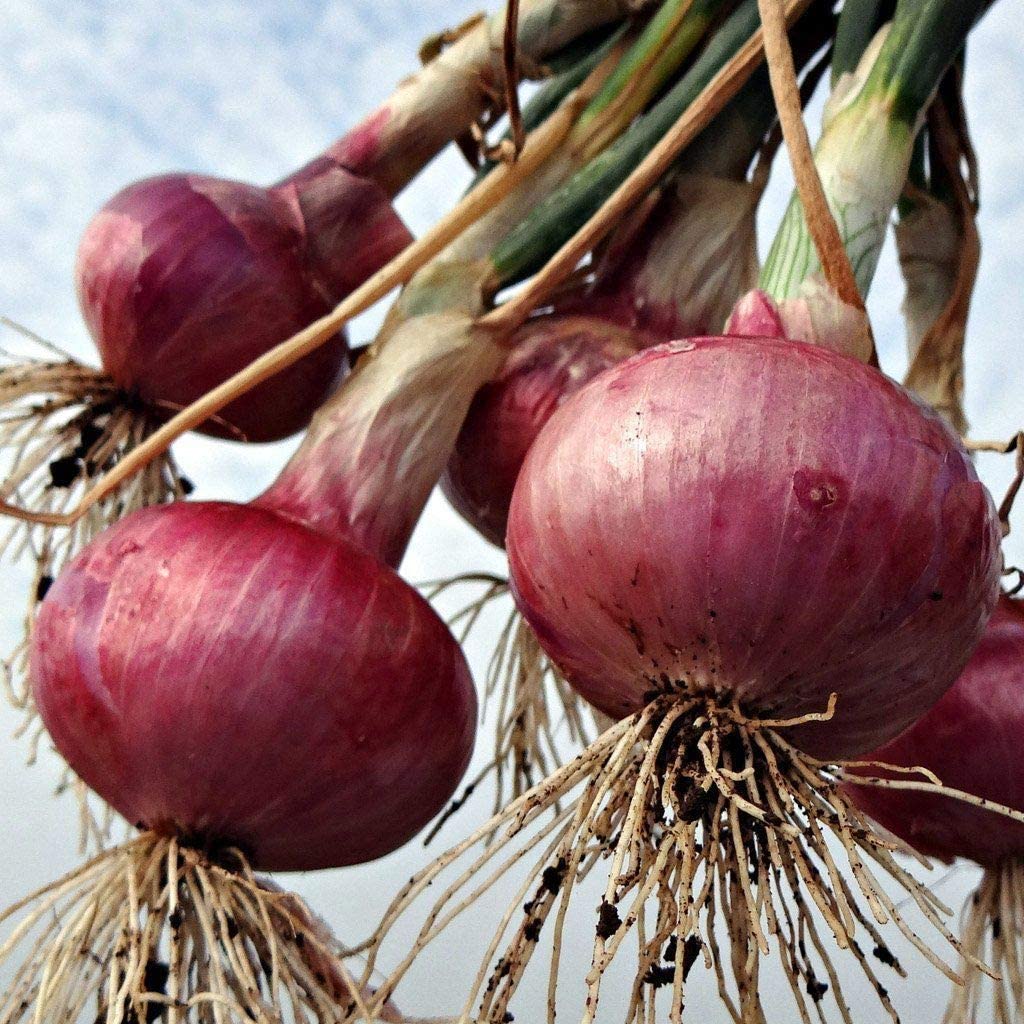





Allium cepa "Red Grano"
Red Grano onions are a type of heirloom onion that are known for their mild and sweet flavor. They are a medium to large-sized onion, typically measuring around 3-4 inches in diameter. As their name suggests, they have a deep red or purple skin color, and their flesh is white with a slightly pink tint.
These onions are versatile and can be used in a variety of dishes, including soups, stews, salads, and sandwiches. When cooked, they become sweeter and more tender, making them ideal for caramelizing or roasting.
Red Grano onions are also a good source of vitamins C and B6, as well as dietary fiber and antioxidants. They are typically grown in the United States and are available in late summer and fall.
Overall, Red Grano onions are a flavorful and nutritious addition to any dish that requires onions, and their vibrant color can also add a beautiful pop of color to your meals.
Sun: Full
Planting Depth: 1/4”
Spacing: 5-6”
Water: Moderate
Days to Maturity/Bloom: 112 days
Height: 20”
Zones: 6-12
Planting Instructions
Type: AnnualSun: Full
Planting Depth: 1/4”
Spacing: 5-6”
Water: Moderate
Days to Maturity/Bloom: 112 days
Height: 20”
Zones: 6-12
Approx seeds per order 300
Plant onions in early spring to be harvested in the fall. They have long growing seasons and usually can withstand a light frost.
Start seeds indoors since they need a soil temperature around 50F to germinate. Once it gets warmer outside and the ground can be worked, transplant seedlings outdoors. Space transplants 4-6" apart in rows 12-18" apart. The plants will need about 1" of water per week. Onions are ready to harvest when the tops turn yellow and start to fall over.
Long Day vs. Short Day Onions:
This designation refers to the amount of daylight the onions need during the summer to form bulbs. Onions are sensitive to amounts of daylight and since different parts of the country receive different amounts of daylight during the summer, onions have been bred to accommodate that. An imaginary line was drawn across the United States, stretching from between the border of North and South Carolina to San Francisco. If you live south of that line, plant short day onions. And, if you live north of the line, plant long-day varieties. There are Day-Neutral or Intermediate varieties, as well, which can grow in any location.
USDA Zone Map









